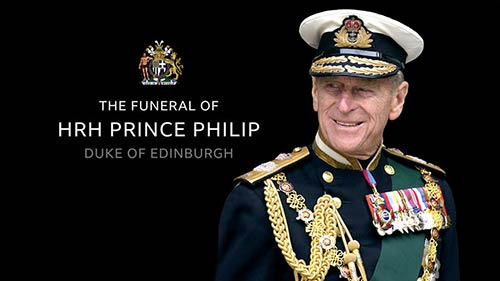
Reflecting on Prince Philip’s Funeral
This is a blog post reflecting on agreed Common Prayer. It is NOT a legalistic argument about disciplining leaders who break agreements, etc.
Here is the order of service for Prince Philip’s funeral. As far as I can ascertain, this is not from a single, authorised funeral rite, but is a dexterous patchwork of funeral material, stitched together, it would seem, by Prince Philip himself. Some want to claim it as a BCP 1662 rite:
But, in doing so, they underscore that it isn’t. In fact, this treats the BCP not as a Book of COMMON Prayer, but as a Book of CHARMING Prayers – one resource amongst many that people can find lovely words in.
The Commendation, for example, may sound 1662 BCPish to some people’s ears – it is in fact from the 1928 Prayer Book that did not receive parliament’s approval, and is the Proficiscere (influenced by Newman’s The Dream of Gerontius) that was excluded from the 1549 and subsequent BCPs (including the 1662 BCP).
I heartily agree with the tweet that:
Of all the services I think we can support the use of “common prayer” to become “un-common prayer” = “fit for the person, occasion”, funerals are first that spring to my mind.
@petercarrell
The problem is that this is not the way our agreed rites are set up. If we agree that funerals should be adapted to fit the person and the occasion, we should authorise agreed rites that clearly indicate this. Instead, agreed funeral rites which, I remind you, clergy vow and sign they will follow, are not constructed in this manner – as a collection of resources. Funeral rites have varying options (as pretty much all rites do) and then fixed words and actions that must be said and done.
If ignoring the requirements of our agreed funeral rite is de rigueur, in fact encouraged in our pastoral formation, and our authorities still continue to produce and authorise rites knowing, in fact advocating, that the requirement to follow them be ignored, how is there any justification for not doing the same for our other agreed rites: baptism, eucharist, marriage, ordination,…?
As an aside, if we formally agreed that funerals fit the person, we could have a suggested structure, and have, for example, just an agreed text for the Commendation and for the Committal.
As another aside, the shift from an understanding of a culture of a Book of COMMON Prayer to a culture of a Book of CHARMING Prayers is well embodied in the 2020 A New Zealand Prayer Book He Karakia Mihinare o Aotearoa – this is a book of resources, and functions as a sort of “buffet”. It is not the obligatory book of the same name referred to in the Church’s Constitution of 3 decades ago.
General Synod/Te Hīnota Whānui of the Anglican Church in Aotearoa, New Zealand and Polynesia has, in fact, endorsed the “buffet” approach of this Book-of-Charming-Prayers culture. You can construct any eucharistic rite as long as it includes a few elements (with unspecified words) and the eucharistic prayer is authorised somewhere in the Anglican Communion (or you can pray your own eucharistic prayer as long as it has words from one of the several frameworks authorised in the Anglican Communion). A non-eucharistic rite has even less restriction (here and here).



Thanks Bosco… To me a striking feature of Prince Philip’s funeral was the absence of a committal, which as you assume above should surely be a necessary element of a funeral. Perhaps the technical reason for this omission is that his body is yet to be interred in its final resting place; but what we saw was a service which began with a body present and ended with the body gone… only with no mention of or prayer over that body.
As an aside which has no bearing on most of us, it makes me curious as to what constitutes authorised (or unauthorised, for that matter) liturgy in a Royal Peculiar like St George’s Chapel.
By the way, this may be a more helpful link for the order of service: https://www.stgeorges-windsor.org/wp-content/uploads/2021/04/The-order-of-service-for-the-funeral-of-The-Duke-of-Edinburgh.pdf
Thanks, Chris. I have no expertise in how a Royal Peculiar works – but I would have thought it was part of the Church of England, and the clergy were leading in their role as CofE clergy, so the rules of the CofE would continue to apply in that context. Just thinking aloud. Easter Season blessings.